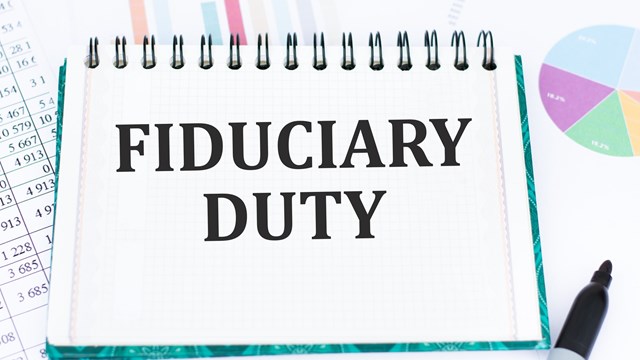What is the role of a board president in a shared-interest community? Is he or she more like a CEO, an administrative custodian, or a figurehead? Depending on the community and the needs and expectations of its members, the answer could be a combination of all three in different measures. Regardless, leading a community of residents with diverse needs and opinions is mostly a balancing act, and not for the faint of heart. To be done well, the job requires a certain type of personality with a variety of skills and traits.
The President’s Role
Understanding what makes a good co-op or condo board president rests on understanding what comprises the president’s role in governing a shared-interest community in the first place. It often requires both micro and macro approaches to management—along with a bit of vision.
According to Alex Argento, vice president of operations for AKAM Property Management’s Southeast division, located in Ft. Lauderdale, “Primarily, the president’s role is to set the agenda and to understand the direction the association wants to take. Setting that agenda is not only about spending money, but also creating a sense of the home/place environment.” Argento should know, as he not only manages shared-interest communities but serves as a sitting board president of a 721-unit community in Boca Raton, Florida. “The president should see himself as a steward of the community.”
Andy Marks, executive vice president with Maxwell-Kates, Inc., an Associa Company, based in New York City, was president of his co-op for seven years. “The board president’s role is multifaceted, and a big responsibility” he says, “because the president literally presides over all matters of the community. I liked board service. I felt being board president was like being mayor of a small town. I’m one of the community members, but at same time I have to think—as do all board members—that my obligation and fiduciary responsibility was to the community overall, not just to myself. I took that role very seriously.”
But being board president, being a leader, is more than just being a benevolent despot. Often, it’s got more to do with communication than with the message itself.
“A board president needs to provide leadership to the board and the community,” says Gary Daddario, a partner with Marcus, Errico, Emerson & Brooks, a New England law firm. Daddario is based in Merrimack, New Hampshire. “In order to do a good job,” he stresses, “the president must be a good communicator. They should always be the last person in most instances to take sides on any issue. He or she guides the board through meetings, and brings issues to a vote, but must always be the last one to speak strongly or come down strongly on one side or another. Maintaining objectivity with unit owners is critical as well. The president must always appear unbiased and objective.”
More Than Just a Title
What are a board president’s duties? They’re much more than ceremonial; the board president steers the figurative ship with the help of the rest of the board, in consultation with their building’s financial and legal advisors. As a practical matter, the board president is responsible for running meetings and overseeing daily operations. Typically the president is also the main point of communications with owners and represents the stakeholders through all collaborations with professionals and vendors.
“Board presidents have the same power as those vested in a president of a corporation under the Business Corporation Law,” says Christopher Tarnok, a partner with DL Partners, a New York City-based law firm. “Generally speaking, a president presides at all meetings and sees that all orders and resolutions of the board are carried through.”
“The president is the point person for the board, but there is a system of checks and balances whereby the other officers must weigh in on financial and material decisions,” adds Jonharold Cicero, also a partner at DL Partners. “In self-managed buildings, the president is also the point person who oversees most items.”
Supporting Roles
The president derives support primarily from the two other ‘official’ roles on the board: vice president and treasurer.
“The vice president is sort of the ultimate compliment to the president,” says Daddario. “Officially, the role of the vice president is to step in and fill in when the president can’t perform his or her duties.”
“The vice president typically runs a committee or oversees a specific task, like landscaping,” adds Argento. “But it all funnels up to the president. In Florida,” he stresses, “there are critically important statutory requirements for board members not present elsewhere. Communities rely heavily on managers to make sure they are abiding by those requirements and doing it right.”
As concerns the position of treasurer, Daddario notes, “For this position, you’re talking about someone who needs to think about financial issues, and who spends a lot of time looking at financial records. They should be able to navigate those waters.” If possible, it’s always preferable to have someone who is in the financial world professionally and can take the lead on figuring budgets and fees for your building or association.
Marks recounts how as president, “I had a shareholder who was a professional accountant in real estate, so it really helped keep things running smoothly. Often we made decisions together. The treasurer handles budgeting, financial reporting, and approving payments of expenses at specific larger levels, so having that yin and yang was valuable for me.”
Multi-Level Management
In some areas, especially in places where phased development is common, there may be more than one board controlling an association, and hence more than one president.
Multi-phase condominium and HOA developments are particularly common in Florida. “Typically,” explains Argento, “the master association is responsible for the maintenance of common areas, roads, pools, parks, gates and lights. The sub-associations are responsible for the people and the rules. The master board doesn’t have daily interactions with the owners. They aren’t the board of the community—they’re the board of the amenities. The board for each phase is responsible for management day to day. The mini associations feed up into the master to pay for everything.”
In New England, Daddario describes a similar standard. “Generally, between the master association and the subs, the master has a short list of what it’s responsible for, which tends to be those things that are truly only the most common and shared aspects of the community, like a main clubhouse or pool or fitness center. They tend to be responsible for the roads, which are often private property in New England. They are responsible in an umbrella fashion for making sure community governing documents are complied with. The subs do what we generally think of as what associations do; pay attention to rules, communicate to any owners in violation, manage landscaping and the exterior of buildings.”
Charles Ross, a retired mortgage lender and commercial banker now living in Florida, is well acquainted with both the practical and theoretical sides of the tiered board arrangement. He lives in a large HOA in southeast Florida with 720 units, and is the president of the master board. “Our association is different,” he notes, “as there are 10 separate communities. The master association oversees a few things, like gates and golf links. The master board is security to the sub boards. Each sub board is responsible for its phase. The master board is responsible for all the phases. They are ultimately responsible for running the community. The sub board sets rules for its phase, but it has to be in line with all others. But the master board sets rules relative to the governing documents. Parking rules, for instance, could be different from one phase to another, but usually not. Your community rules must be in compliance with all of the above, plus county, state, and federal rules.”
Self-Management
In light of the fact that most condo, co-op, and HOA properties have outside management, the responsibilities and workload of the president is mitigated by the presence of and assistance from outside managers. But what about self-managed properties?
In Florida, explains Argento, “Self-managed properties of more than 25 units are required by the state to have at a minimum an on-site manager. These communities only have their manager as their professional guide–there’s no team behind the manager as there would be where a professional management firm leads the way and offers all kinds of ancillary services and knowledge. Presidents of self-managed properties have a lot more to do.”
Daddario stresses the same point. “If an association does not have third party professional management, then the focus really falls on the president to undertake the property manager role–like liaising with vendors, for example, collecting [vendor] proposals, and being the contact for emergencies. Things professional managers would do have to be done by the president. It’s not necessarily an obligation, but that is where things tend to land unless the president delegates those tasks to others.”
What Makes the Perfect President?
Given that array of tasks and expectations, what personal attributes make a good board president? Andy Marks has a few thoughts after his years as both a board president and a real estate professional:
“It is a combination of things,” he says. “You must be open to receiving feedback and criticism, because you’re often the target of ire. You must be a good listener, and understand what’s motivating the shareholder speaking to you. Saying, ‘OK, let me look into it,’ must come naturally. Not only listening, but being willing to address people–both staff and residents–with respect is critical. You also need a good working relationship with the managing agent and the super. They are your partners. The ability to communicate across different demographics in terms of age, knowledge of technology, etc. is increasingly important. Many residents may need a phone call instead of a memo or text. You must know how to communicate.”
As the old saying goes, sometimes it’s not what you say, it’s how you say it. That skill may be ground zero for great leadership.
A J Sidransky is a staff writer/reporter for CooperatorNews, and a published novelist. He may be reached at alan@yrinc.com.










Leave a Comment